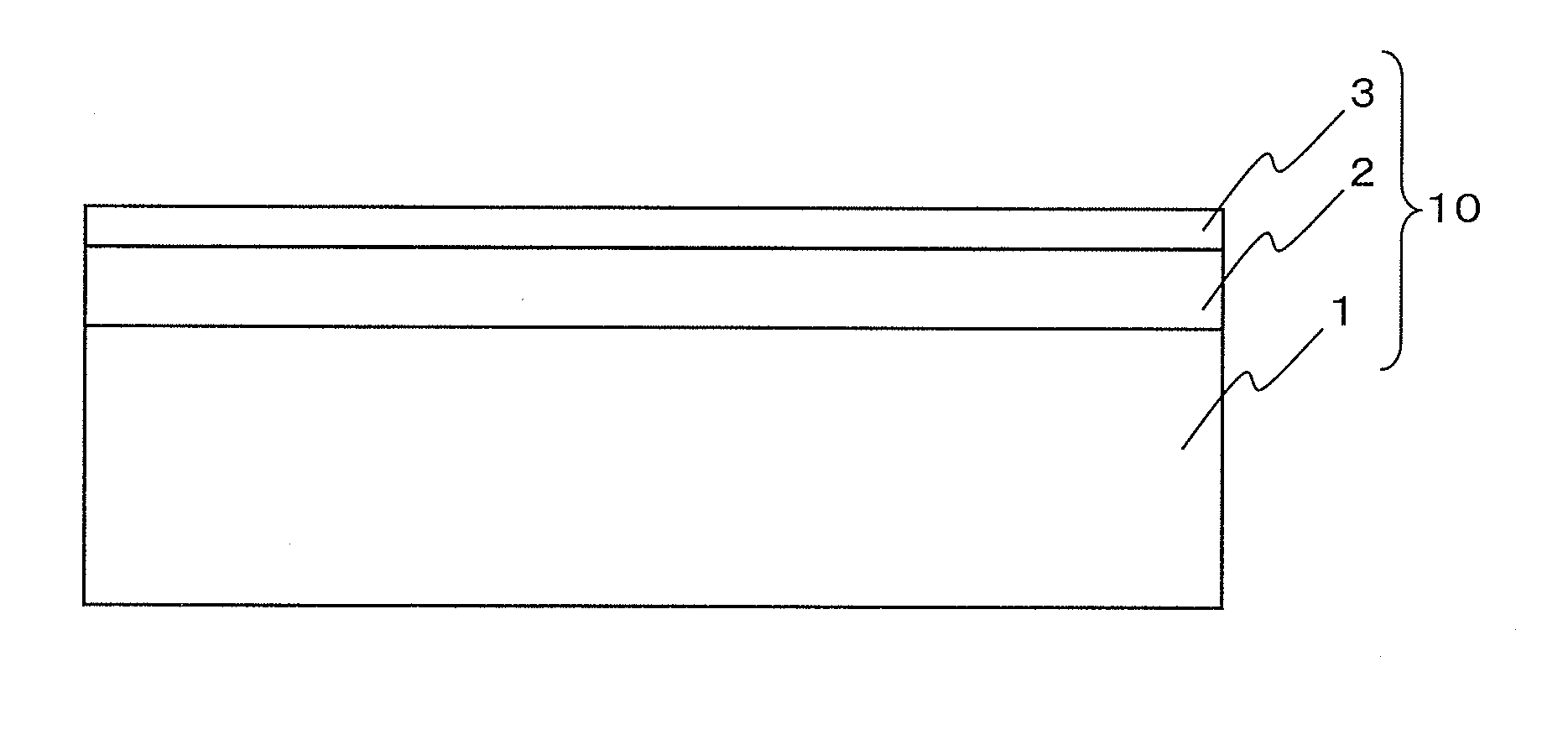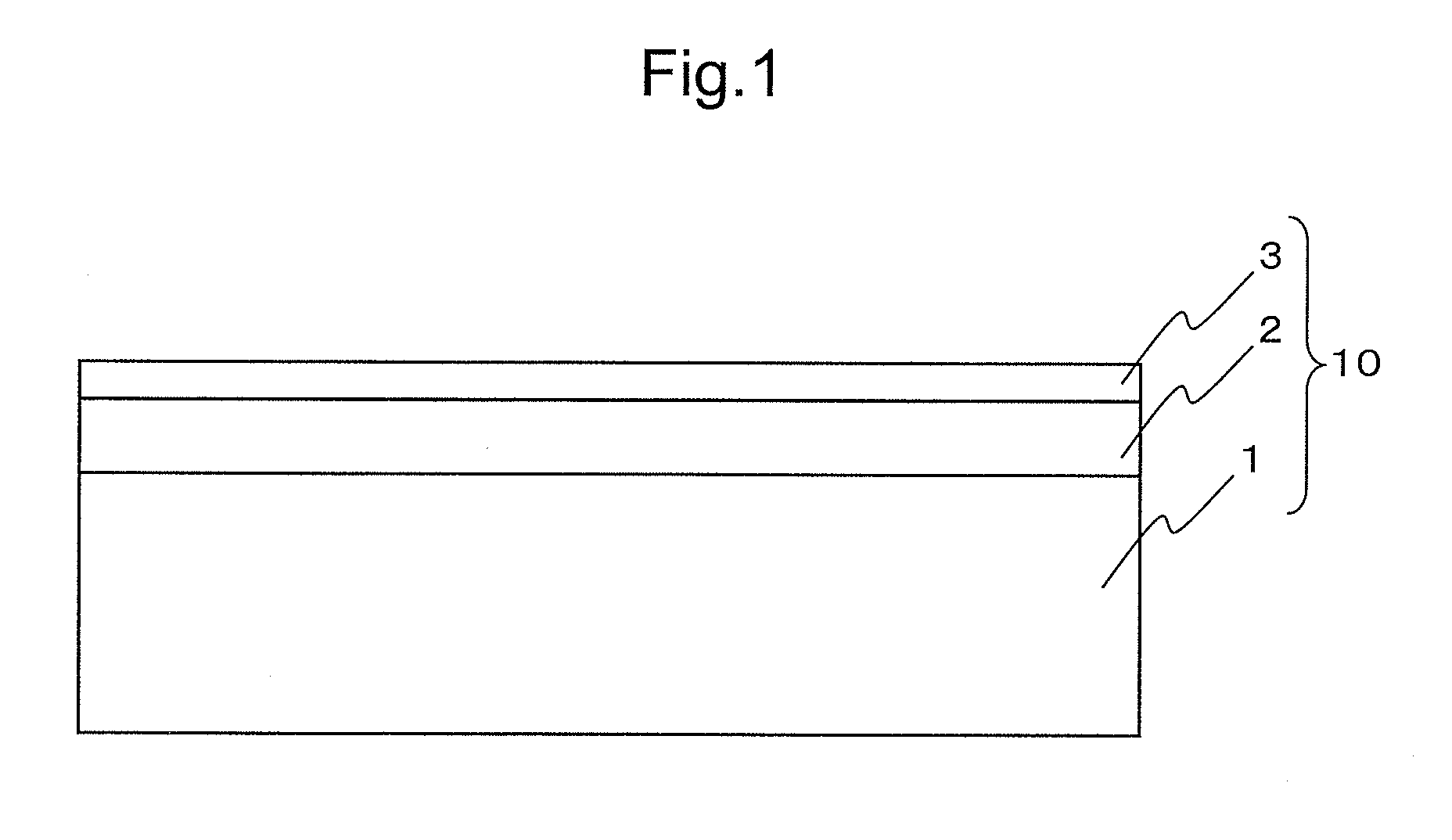Transparent conductive laminate and transparent touch panel
a technology of transparent touch panel and conductive laminate, which is applied in the direction of conductive layers on insulating supports, paper/cardboard containers, instruments, etc., can solve the problems of disadvantageous breakage, low surface hardness and easy scratching of transparent organic polymer substrates
- Summary
- Abstract
- Description
- Claims
- Application Information
AI Technical Summary
Benefits of technology
Problems solved by technology
Method used
Image
Examples
example 1
[0183]On one surface of a 100 μm-thick polycarbonate (PC) film prepared by a melting method (“PANLIGHT Film” D100, produced by Teijin Chemicals, Ltd., weight average molecular weight: 18,500, tensile elongation at break: 5%), Coating Solution P1 was coated by a bar coating method, irradiated with an ultraviolet ray and thereby cured to form a cured resin layer having a thickness of 3 μm. Separately from this, for an indentation hardness test, a sample of a cured resin layer having a thickness of 5 μm was prepared by the same method.
[0184]Furthermore, an ITO layer was formed on the cured resin layer by a sputtering method using an indium oxide-tin oxide target having a composition of indium oxide and tin oxide in a weight ratio of 95:5 and having a filling density of 98% to produce a transparent electroconductive laminate used as a movable electrode substrate. The film thickness of the ITO layer formed was about 20 nm, and the surface resistance value after film formation was about 3...
example 2
[0187]A cured resin layer was formed in the same manner as Example 1 except for changing the thickness of the cured resin layer to 8 μm.
[0188]Furthermore, an ITO layer was formed in the same manner as Example 1. The film thickness of the ITO layer formed was about 20 nm, and the surface resistance value after film formation was about 350 Ω / sq. Also, the surface resistance value after heat treatment was about 280 Ω / sq.
[0189]Evaluation results of this transparent electroconductive laminate are shown in Table 1.
example 3
[0190]On one surface of the same melting-method polycarbonate (PC) film as Example 1, Coating Solution P2 was coated by a bar coating method, irradiated with an ultraviolet ray and thereby cured to form a cured resin layer having a thickness of 3 μm. Separately from this, for an indentation hardness test, a sample of a cured resin layer having a thickness of 5 μm was prepared by the same method.
[0191]Furthermore, an ITO layer was formed in the same manner as Example 1. The film thickness of the ITO layer formed was about 20 nm, and the surface resistance value after film formation was about 350 Ω / sq. Also, the surface resistance value after heat treatment was about 280 Ω / sq.
[0192]Evaluation results of this transparent electroconductive laminate are shown in Table 1.
PUM
| Property | Measurement | Unit |
|---|---|---|
| transparent | aaaaa | aaaaa |
| transparent | aaaaa | aaaaa |
| thickness | aaaaa | aaaaa |
Abstract
Description
Claims
Application Information
 Login to View More
Login to View More - R&D
- Intellectual Property
- Life Sciences
- Materials
- Tech Scout
- Unparalleled Data Quality
- Higher Quality Content
- 60% Fewer Hallucinations
Browse by: Latest US Patents, China's latest patents, Technical Efficacy Thesaurus, Application Domain, Technology Topic, Popular Technical Reports.
© 2025 PatSnap. All rights reserved.Legal|Privacy policy|Modern Slavery Act Transparency Statement|Sitemap|About US| Contact US: help@patsnap.com


